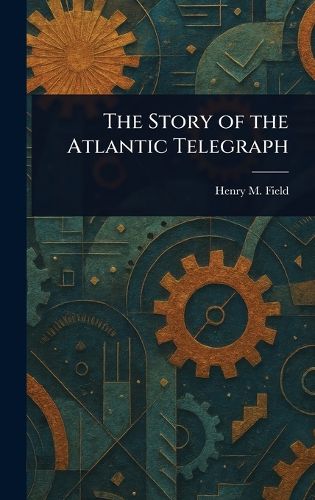Readings Newsletter
Become a Readings Member to make your shopping experience even easier.
Sign in or sign up for free!
You’re not far away from qualifying for FREE standard shipping within Australia
You’ve qualified for FREE standard shipping within Australia
The cart is loading…






This title is printed to order. This book may have been self-published. If so, we cannot guarantee the quality of the content. In the main most books will have gone through the editing process however some may not. We therefore suggest that you be aware of this before ordering this book. If in doubt check either the author or publisher’s details as we are unable to accept any returns unless they are faulty. Please contact us if you have any questions.
Discover the thrilling true story behind one of the Victorian era's most ambitious technological feats in "The Story of the Atlantic Telegraph" by Henry Martyn Field. This meticulously prepared edition chronicles the monumental effort to lay the first transatlantic cable, forever changing global communication. Explore the history of the Atlantic cable, a marvel of engineering that connected continents via submarine telegraph.
Delve into the challenges and triumphs of cable laying as this historical text recounts the science and innovation that defined an era. From the initial concept to the final successful transmission, this book offers a captivating glimpse into the world of early telecommunications. A fascinating read for anyone interested in the history of technology, American history of the 19th century, or the story of scientific progress. Experience the dawn of instant global communication through this remarkable account.
This work has been selected by scholars as being culturally important, and is part of the knowledge base of civilization as we know it.
This work is in the public domain in the United States of America, and possibly other nations. Within the United States, you may freely copy and distribute this work, as no entity (individual or corporate) has a copyright on the body of the work.
Scholars believe, and we concur, that this work is important enough to be preserved, reproduced, and made generally available to the public. We appreciate your support of the preservation process, and thank you for being an important part of keeping this knowledge alive and relevant.
$9.00 standard shipping within Australia
FREE standard shipping within Australia for orders over $100.00
Express & International shipping calculated at checkout
This title is printed to order. This book may have been self-published. If so, we cannot guarantee the quality of the content. In the main most books will have gone through the editing process however some may not. We therefore suggest that you be aware of this before ordering this book. If in doubt check either the author or publisher’s details as we are unable to accept any returns unless they are faulty. Please contact us if you have any questions.
Discover the thrilling true story behind one of the Victorian era's most ambitious technological feats in "The Story of the Atlantic Telegraph" by Henry Martyn Field. This meticulously prepared edition chronicles the monumental effort to lay the first transatlantic cable, forever changing global communication. Explore the history of the Atlantic cable, a marvel of engineering that connected continents via submarine telegraph.
Delve into the challenges and triumphs of cable laying as this historical text recounts the science and innovation that defined an era. From the initial concept to the final successful transmission, this book offers a captivating glimpse into the world of early telecommunications. A fascinating read for anyone interested in the history of technology, American history of the 19th century, or the story of scientific progress. Experience the dawn of instant global communication through this remarkable account.
This work has been selected by scholars as being culturally important, and is part of the knowledge base of civilization as we know it.
This work is in the public domain in the United States of America, and possibly other nations. Within the United States, you may freely copy and distribute this work, as no entity (individual or corporate) has a copyright on the body of the work.
Scholars believe, and we concur, that this work is important enough to be preserved, reproduced, and made generally available to the public. We appreciate your support of the preservation process, and thank you for being an important part of keeping this knowledge alive and relevant.